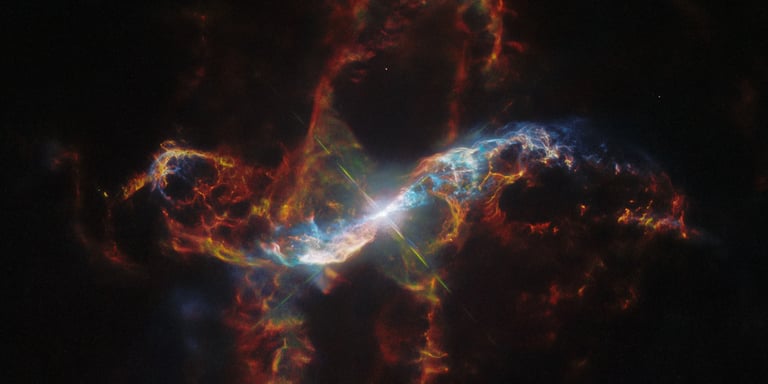Stunning Hubble Timelapse Reveals Explosive Beauty of R Aquarii's Dueling Stars
October 20, 2024
Ultimately, this process illustrates that humans are made of 'star stuff,' as the materials in our bodies originated from the cores of stars.
Scientists have compiled a timelapse video from five years of Hubble images, illustrating the brightness changes of the stars and the nebula's evolution.
This unique timelapse, created by the European Space Agency and based on Hubble data from 2014 to 2023, highlights the dynamic nature of the R Aquarii system.
The study of novae like R Aquarii is crucial for understanding how elements necessary for new stars and life are recycled in the universe.
NASA's Hubble Space Telescope has been observing the binary star system R Aquarii for over 30 years, located approximately 700 light-years from Earth.
R Aquarii consists of an aging red giant star, which is over 400 times the size of the Sun and shines nearly 5,000 times brighter at its peak, and a compact white dwarf.
The white dwarf orbits the red giant every 44 years, siphoning hydrogen gas, which leads to explosive outbursts resembling 'gigantic hydrogen bombs.'
These violent eruptions occur as the white dwarf draws material from the red giant, resulting in massive explosions on the dwarf's surface.
During these outbursts, material is ejected into space at speeds exceeding 1 million mph, forming twisted gas streamers that give the surrounding nebula a unique appearance.
The system releases gas streams that extend 248 billion miles into space, significantly farther than the diameter of our solar system.
Remarkably, the emitted material has been traced to distances of at least 248 billion miles from the star, showcasing the vast reach of these cosmic events.
Hubble's latest observations reveal that the ejected material has formed a spiral pattern due to the explosive forces and magnetic fields at play.
Summary based on 3 sources
Get a daily email with more Science stories
Sources

Mashable • Oct 21, 2024
NASA captures star duo spraying plasma a quarter-trillion miles
Space • Oct 20, 2024
Hubble Telescope sees 'stellar volcano' erupt in amazing colors (video, photo)
Fox Weather • Oct 19, 2024
Hubble telescope captures stunning images of star system reminiscent of a volcano